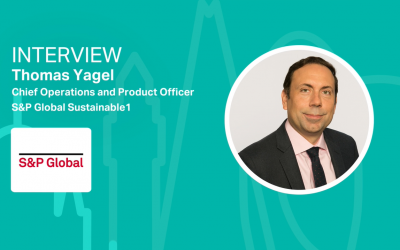Prioritising Climate Solutions: A New Asset Owner Framework to Guide Investment Towards 2°C
As the urgency to limit global warming to 2°C intensifies, investors are increasingly looking to climate solutions as both a lever for emissions reductions and an attractive investment opportunity. But achieving global climate goals requires more than allocating capital to low-carbon technologies. It demands deliberate, forward-looking investment strategies – ones that prioritise the most meaningful climate solutions and build the ecosystems needed to scale them.

To meet this challenge, the Global Impact Investing Network (GIIN) has developed the Climate Solutions Investing Framework, a practical guide to help asset owners assess and prioritise climate solutions strategies. The framework is designed to help asset owners evaluate the potential of climate solutions strategies and guide manager selection.
Climate solutions investing involves:
- A systematic approach to building portfolios that prioritises investments based on their potential to meaningfully contribute to limiting global warming to 2°C.
- A commitment to investing in solutions that also support the commercial infrastructure needed for economy-wide transformation – from supply chains to enabling technologies.
Importantly, not all climate strategies are created equal. The framework encourages investors to go beyond surface-level assessments and ask critical questions about sufficiency: Do the strategies under consideration mobilise the technologies, assets and business models needed to shift emissions trajectories in time?
Focusing specifically on climate mitigation, the GIIN’s framework provides clear criteria to evaluate and prioritise climate solutions strategies:
- Identifying a strategy’s climate thesis: Understand how a manager defines the investment universe and guides portfolio construction using emissions reduction and/or transition goals.
- Assessing the approach to quantifying contribution to economy-wide decarbonisation: Understand how a manager evaluates the direct and systemic contribution of investments into strategies on real-economy emissions reductions.
- Understanding the approach to prioritisation: Understand how the manager evaluates the relative importance of an investment’s potential contribution by placing them in context, including geography, sectoral pathways, maturity, timing or enabling conditions.
- Understanding the methodologies used to manage uncertainties: Understand how the manager identifies and communicates key assumptions, variables and risks in their climate analyses and how they monitor or revise those over time.
The framework will launch during London Climate Action Week, at a live event hosted by the GIIN and Nuveen on 24 June 2025. To learn more about the event or express interest in joining a piloting group, email bdebarros@thegiin.org
To learn more about the GIIN’s Climate Solutions Investing Initiative and access the draft Framework, visit Climate Solutions Investing Initiative - The GIIN.





_400_250_80_s_c1.jpg)
